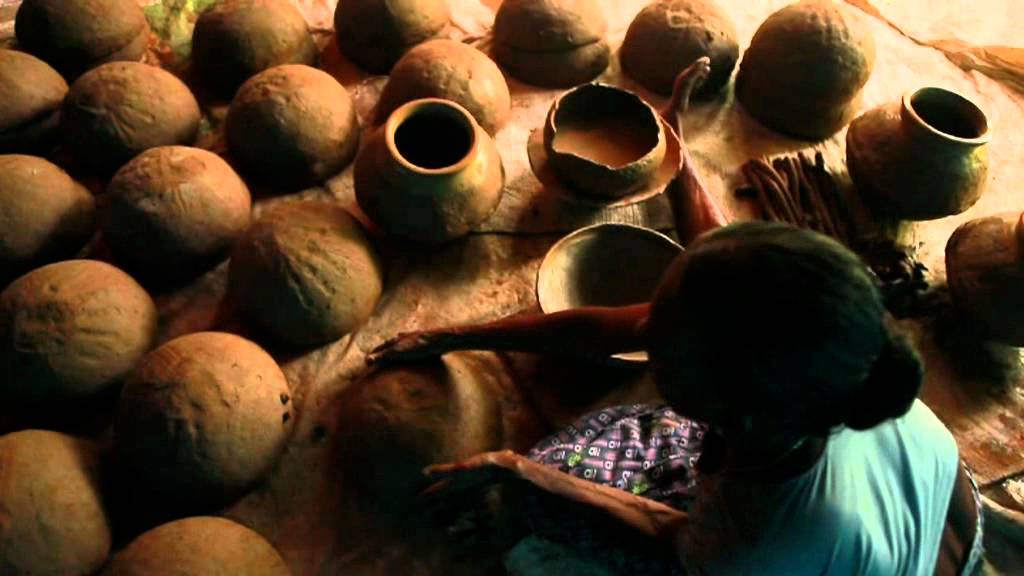In SN 12.51 we have a brief simile. But the exact import is unclear to me, and I wondered if anyone could help clear it up.
Seyyathāpi, bhikkhave, puriso kumbhakārapākā uṇhaṃ kumbhaṃ uddharitvā same bhūmibhāge paṭisisseyya. Tatra yāyaṃ usmā sā tattheva vūpasameyya, kapallāni avasisseyyuṃ.
Bodhi: Suppose a man would remove a hot clay pot from a potter’s kiln and set it on smooth ground: its heat would be dissipated right there and potsherds would be left.
It’s an illustration of an arahant, who reflects that when they die, only the bodily remains (sarīrāni) are left, due to having no attachments. Something like this:
AS BB notes, the plural kapallāni that he translates as “potsherds” is clearly meant to match up with the plural for “bodily remains”. But I don’t understand how we get from a new clay pot set on the ground to some potsherds. I mean, pots last for thousands of years, it seems like an odd simile for impermanence. And our texts seems to be emphasizing that the pot is carefully placed on even ground.
Kapalla, also sometimes spelled in Pali the same as the Sanskrit kapāla, means “pot”, “cup”, and frequently “skull”. (Fun fact: it’s etymologically related to English “head”.) It has a religious significance. The skulls can be used as beggars bowls (but not by Buddhists!), or as grotesque adornments, while “cups” are a common part of the ritual equipment.
The commentary explains that the plural form refers to potsherds bound together by the rim. But I find this unpersuasive: clay pots don’t work like that.
There is considerable confusion regarding the verb describing putting down the pot. Our mainline text reads paṭisisseyya, while the Mahasangiti lists the following variants: paṭiviseyya (bj) | patiṭṭhapeyya (s1-3, km, pts1-2) | paṭiseveyya (ṭīkā). The PTS edition adopts patiṭṭhapeyya as the main reading, attributed to the Sri Lankan text, with paṭiviṁseyya attributed to the Thai, and paṭisasseyya attributed to Burmese. The commentary reads Paṭisisseyyāti ṭhapeyya, which i guess translates as “Leftover means remains”. This appears to be the only occurrence of this term.
The variant paṭiviṁseyya would appear to be related to paṭiviṃsa in the sense of divided, perhaps “broken up”, but it doesn’t appear to be a legitimate verb form.
Fortunately we have two parallels to add to the confusion. Here’s the Sanskrit, from SF 159:
tad yathā balavān puruṣaḥ soṣmāt kumbhakārapākāt soṣmaṃ kumbhaṃ gṛhītvā same pṛthivīpradeśe upanikṣipeta tasya ya uṣmā so ’ntarhīyeta śītībhaveyuḥ kapālāni
Sujato: Suppose a strong person were to take a hot clay pot from a hot kiln and put it down on level ground. Its heat would disappear, and the shards would become cool.
The plural kapālāni is still here, which is strong evidence that it’s correct, but it’s still unclear how the pot gets broken up. The verb here is upanikṣipeta, which doesn’t correspond with any of the Pali variants. Now, normally I would take this to simply mean “place down”, or “put down nearby”. However, the Sanskrit dictionary includes “thrown down” as a possible meaning. Perhaps that could be meant here: the pot is smashed on the ground. Having said which, the literary evidence for this meaning is unclear, and I don’t regard it as a strong case.
Here’s the Chinese, from SA 292. Remember, this is likely to be from a text similar to that of the Sanskrit. Hopefully @llt will correct my Chinese!
譬如力士取新熟瓦器,乘熱置地,須臾散壞,熱勢悉滅
Sujato: Suppose a strong person were to take a freshly baked clay pot and convey it while hot to the ground. The heat would be quickly scattered and the energy would be all gone.
Here, I think 滅 stands for śītībhaveyuḥ, and 勢 (“energy”) for kapālāni, by mistake I guess.
My best guess for the interpretation would be this. Rather than thinking of the “shards” as the broken pieces of the pot, they are the shards left behind in the fire. This is common. Pots break, and also pots may be stacked together with broken shards in the kiln.
The “level ground” out of the fire is clearly a simile for nibbana. The pot is removed from the fire, and only shards remain in the fire.
So we might translate:
Sujato: Suppose a person was to remove a hot clay pot from a potter’s kiln and place it on level ground. Its heat would be dissipated right there, while the shards would be left behind (in the kiln).


 Needless to say….
Needless to say…. ).
).